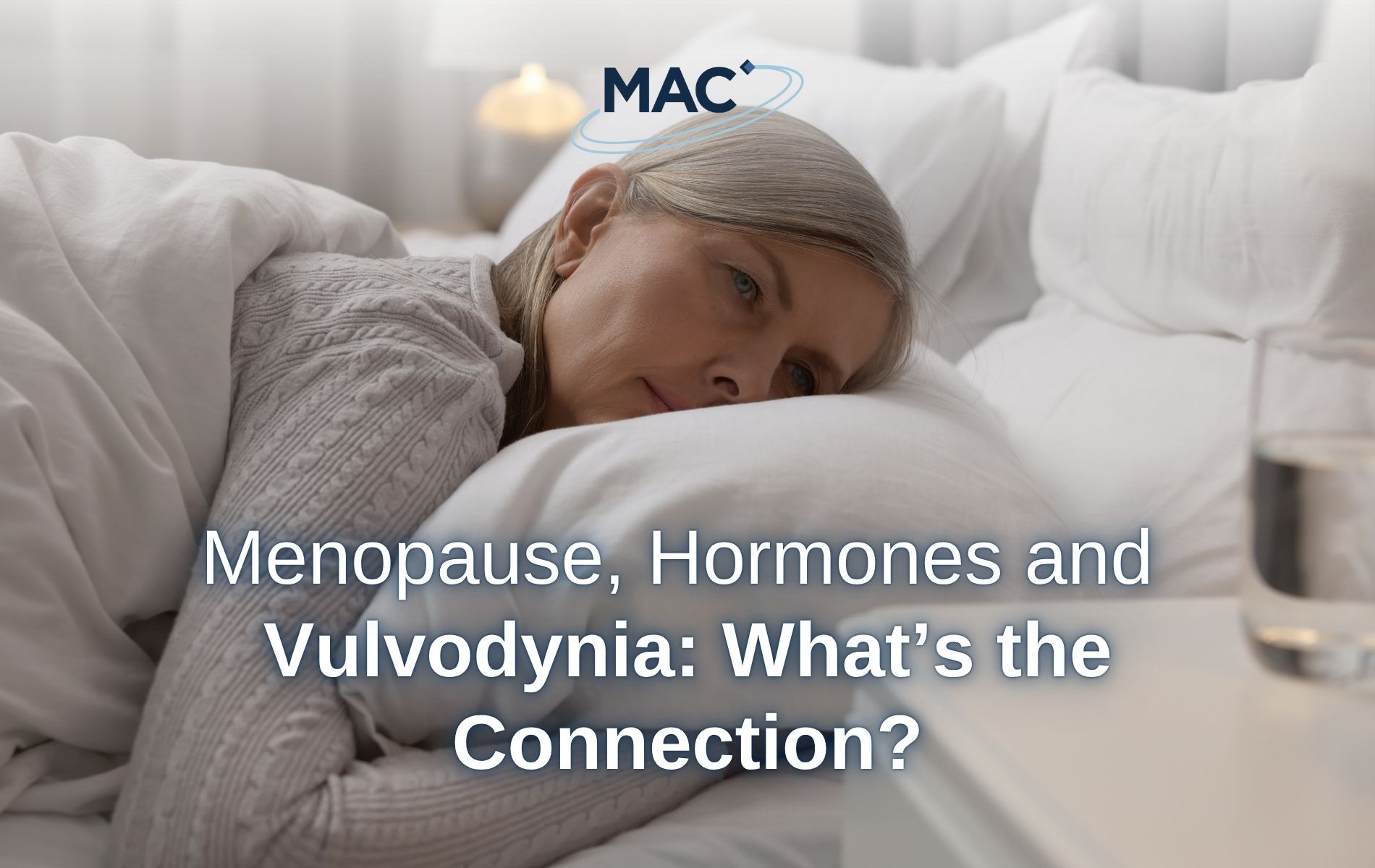This World Menopause Awareness Day, we’re exploring the relationship between menopause, hormones, and vulvodynia. Vulvodynia (vulvar pain with no clear cause) affects up to 16% of women1 and can happen at any age. Research has linked some types of vulvodynia with hormone levels, particularly a drop in oestrogen2, a hormonal decline that happens naturally as women age.
What is menopause?
Menopause is when periods stop due to lower hormone levels, usually between the ages of 45 and 55, though it can happen at a younger age3. It can cause symptoms like:
- Anxiety
- Mood swings and low mood
- Reduced sex drive
- Brain fog
- Hot flushes
- Headaches, muscle aches, and joint pain
- Irregular periods
- Weight gain
- Vaginal dryness and pain, itching, or discomfort during sex4.
Menopause happens as you age, and the body naturally produces less oestrogen and progesterone. However, it may also occur due to surgery to remove the ovaries or uterus, cancer treatments, genetics, or an unknown reason.
Menopause is often preceded by perimenopause, where you have menopausal symptoms, but you still have your period. You reach menopause when your periods have stopped for 12 months, but symptoms of menopause can begin years before this and continue after3.
Hormones and vulvodynia
One of the symptoms that may happen during menopause is vaginal discomfort or pain, mimicking the experience of those living with vulvodynia. While they are separate conditions that each require specific treatment, they can occur simultaneously for some people. Vulvar pain in post-menopausal women is often attributed to declining oestrogen and subsequent vulvovaginal atrophy also known as VVA or GSM (thinning, drying, and inflammation of the vaginal walls and vulvar skin), but such symptoms may be attributed to vulvodynia5.
Changes in hormone levels are one of the most common reasons for the development of vulvodynia; this type of vulvodynia is known as hormonally mediated vestibulodynia or atrophic vestibulitis2. The vulvar pain is associated with low levels of oestrogen and imbalanced levels of testosterone, which can be caused by:
- Hormonal contraceptives
- Menopause
- Hormonal treatments for acne, endometriosis, etc.
- Surgical removal of the ovaries
- Chemotherapy2.
Research indicates that pre- and post-menopausal women living with vulvodynia experience similar levels of pain. However, the overlap of symptoms associated with menopause can lead to underdiagnosis and inadequate vulvodynia treatment in post-menopausal women6.
Treating vulvodynia
If you believe you have vulvodynia, it is key that you consult a healthcare professional, and if possible, a specialist such as a gynaecologist. They can begin to rule out other causes for your pain and help you receive treatment.
Treatments for vulvodynia vary; options can include topical medications, oral pain relief, nerve blockers, physiotherapy, and surgery in some cases. You may also benefit from counselling or sex therapy, which can offer psychological support for managing your pain.
Unfortunately, for many people living with vulvodynia, existing treatments do not offer relief or fully work. Some treatments, such as numbing cream, can also have a negative impact on a person’s sex life.
If you have a diagnosis of vulvodynia (provoked vestibulodynia) with pain experienced for at least 12 months, you may be eligible to participate in one of our upcoming clinical trials.
You could help generations to come, plus, if eligible, you will receive up to £1730 for your time and commitment upon completion of the clinical trial.
For more information and to register your interest, please visit our vulvodynia research webpage.
References
1 The National Vulvodynia Association – Vulvodynia: Get the Facts
2 The Centers for Vulvovaginal Disorders – Conditions – Vulvar Vestibulitis
3 NHS – Menopause
4 NHS – Menopause – Symptoms
5 Mitro et al. (2016) – Chronic vulvar pain in a cohort of post-menopausal women: Atrophy or Vulvodynia?
6 Phillips et al. (2015) – Presenting symptoms among premenopausal and postmenopausal women with vulvodynia: A case series: Vulvodynia in pre- and post-menopausal women




